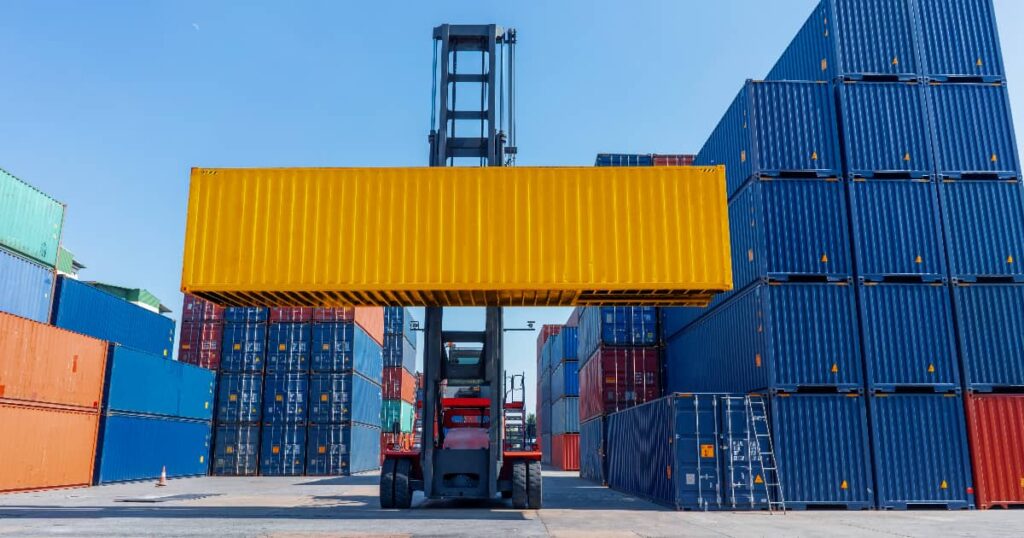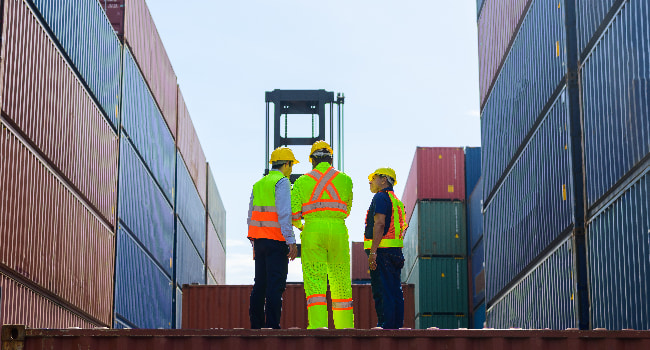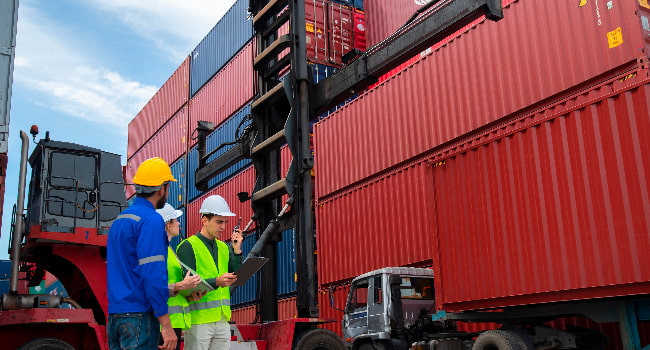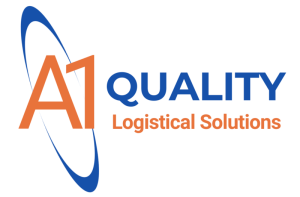A1 Quality Logistical Solutions

- By Haley
- May 15, 2025
Table of Contents
Key Highlights
- Container unloading is a critical process within logistics, often influencing supply chain efficiency and operational costs.
- Several key factors, including proper staffing, equipment utilization, and pre-arrival planning, greatly impact unloading efficiency.
- Technological advancements, like automation and AI, are transforming the warehousing industry by streamlining labor-intensive processes.
- Partnering with warehouse staffing agencies offers access to skilled workers, especially during busy seasons or special projects.
- Implementing best practices like safety compliance and coordinated planning ensures smoother unloading operations.
- Investing in innovative unloading methods helps reduce labor costs and enhances workforce productivity.
Introduction
Container unloading starts a product’s journey through the supply chain. This process greatly affects logistics efficiency. Traditional methods for handling freight are very common, but they often face issues like high labor costs and inefficiencies. To get better results, businesses need to focus on important factors such as warehouse staffing, how operations are organized, and how equipment is used. By improving container unloading, companies can make logistics better, lower costs, and boost overall productivity. Now, let’s look at the basic aspects of container unloading.
Understanding the Basics of Container Unloading
Efficient unloading of containers is key to any logistics operation. This happens in ports, warehouses, and distribution centers, where unloading affects the speed at which goods enter supply chains. Businesses face problems like delays, lack of workers, or safety issues during the unloading process. To solve these problems, it’s important to understand proper workforce planning and how to use equipment effectively.
In today’s changing logistics world, old unloading methods may struggle with new operational challenges. By going back to the basics and adding safety steps, alongside rethinking staffing plans, businesses can create a better system for handling freight. So, what does container unloading involve in logistics? Let’s explore it more clearly.

What is Container Unloading in Logistics?
Container unloading is the organized way to take goods out of shipping containers when they arrive at warehouses, ports, or distribution centers. This step is very important in the logistics chain. It affects how fast and accurately freight is delivered across supply chains. The process needs to handle many goods efficiently to prevent delays in operations.
Shipping companies, freight handlers, and logistics teams work together to make sure unloading matches speedy shipping schedules. To unload successfully, local teams must coordinate well. They also need to use advanced equipment and follow industry rules.
Knowing the details of this process lets businesses find ways to improve. They can reduce problems and save costs. Using automation or investing in training programs can help. Container unloading starts the freight processing within the logistics network. Doing this efficiently is important for all later operations in the supply chain.
Key Elements that Affect Container Unloading Efficiency
Several factors affect how well containers are unloaded. If there are not enough staff or if shift schedules are not in line, it can cause delays and problems with workflow during busy times. Using flexible options like a staffing agency can help to have reliable workers when it gets busy or for special projects.
Another important factor is using the right unloading equipment. Proper use of forklifts or conveyors increases productivity, while Personal Protective Equipment (PPE) keeps workers safe. This mix of speed and safety helps to take care of worker well-being.
Finally, good planning is key. Distribution centers that handle multiple shipments every day need strong coordination among their teams before shipments arrive. Creating a smooth system between shippers and warehouse staff helps speed up unloading and avoids any issues. Combining these elements leads to an effective system for unloading containers, helping businesses improve logistics performance without difficulty.
Best Practices for Efficient Container Unloading
Efficient unloading of containers is important for keeping things safe and quick. Planning before shipments arrive helps warehouse workers and equipment to be prepared. When businesses use unloading equipment wisely, their operations go better, and workers have less effort.
Also, making sure to follow safety rules and giving workers PPE keeps them safe from dangers at work. This helps maintain a strong workforce. Good staffing and training also improve unloading efficiency. This allows companies to stay productive, even when busy. Next, we will talk about planning for pre-arrival coordination.

Pre-arrival Planning and Coordination
Proper planning and teamwork before containers arrive help make unloading easier. Distribution centers work better when teams set schedules, share resources, and think ahead about possible problems. For example, having skilled warehouse workers ready will make it easier to manage large shipments.
Teams should also look at things like handling lumper fees and keeping good communication between shippers and warehouse staff. Businesses can get ready by going over shipment information, having backup workers ready through agencies, and checking equipment before using it.
Pointers to remember:
1. Allocate skilled labor in advance, especially for seasonal hiring needs.
2. Confirm freight logistics and lumper fees with updated schedules.
3. Verify equipment availability, including forklifts and PPE, for optimal readiness.
4. Review warehouse layouts to anticipate unloading workflows efficiently.
Using strong plans before containers arrive creates a reliable unloading process and helps avoid delays.
Effective Use of Unloading Equipment
Using the right tools for unloading helps speed up the process while keeping safety and reliability intact. Forklifts, conveyor belts, and industrial cranes are often used for quick handling of freight. These tools can lower the amount of manual labor needed, which allows the workforce to focus on other important tasks.
In addition to equipment, businesses must train operators to use these tools safely. Providing Personal Protective Equipment (PPE) fosters a safety culture among unloading teams and reduces the risk of injuries at work. This blend of effective equipment use and safe practices boosts productivity and improves worker morale.
Also, distributing equipment correctly across loading docks, entry points, and staging areas helps ensure everything flows smoothly. By combining these tools with regular checks of unloading needs, businesses can keep up with market demands without mistakes or wasting time. Embracing new technology in unloading can lead to further improvements in logistics.
Technological Advancements in Container Unloading
Recent innovations have changed how we unload containers. They bring speed and automation into the spotlight. Tools like automated systems and AI help businesses manage a higher quantity of freight. Warehouse staffing agencies and logistics platforms are using this technology to create better workflows.
These new methods make unloading more accurate. They also reduce the need for manual labor. As businesses try to work better, investing in smart technology can provide an edge over the competition. Now, let’s look at how automation and artificial intelligence are changing container unloading.

Automation in the Unloading Process
Automation is changing the game in container unloading. It makes work easier by speeding up tasks that used to need a lot of people. Automated systems, like robotic arms and conveyor belts, help pickers and warehouse workers manage pallets faster and more accurately.
Here’s a detailed table showing the benefits of automation:
Automation Features | Advantages |
Robotic Arms | Faster freight handling, less need for manual lifting. |
Automated Conveyor Belts | Keeps goods moving nonstop without needing more workers. |
Freight Sorting Apps | Improves inventory tracking and organization. |
Automation reduces human mistakes, speeds up unloading, and makes the supply chain work better. Upgrading to these technologies helps businesses handle demand spikes and keeps things consistent in distribution centers.
The Role of AI and Machine Learning
Artificial Intelligence (AI) and Machine Learning (ML) both boost container unloading in the warehousing industry. They look at data trends to find problems and send alerts for maintenance on equipment. This helps make unloading more reliable and lessens downtime.
For example, warehouse staffing agencies, like TrueBlue company, use AI-based platforms to match workers with tasks that fit their skills. This means businesses always have skilled workers ready for unloading tasks.
Also, AI tools improve inventory management. These systems manage where to place freight after unloading, making supply chain operations smoother. By using AI, businesses create a better logistics model. They can keep improving efficiency without needing too much manual work. Let’s sum up everything we discussed in the next conclusion.
Conclusion
Improving how containers are unloaded is important for better logistics and timely deliveries. By following some best practices, companies can make a big difference. This includes planning before containers arrive, using modern unloading machines, and adopting tech like automation and AI. These steps can help cut down on delays and make operations smoother.
When companies understand the main factors that affect unloading efficiency, they can find ways to improve. This leads to a stronger supply chain. As logistics keeps changing, using new ideas can not only increase productivity but also make customers happier. If you want to learn how to better your container unloading processes, contact us for a free consultation today!
Frequently Asked Questions
What Are Common Challenges in Container Unloading?
Container unloading problems often come from not having enough staff, high labor needs during busy seasons, and poor coordination among local teams. Unexpected fees or lump costs can also happen. Solutions are to hire extra support through staffing agencies and improve communication with shippers to ease freight bottlenecks.

Haley serves as the Marketing Manager for A1 Quality Logistical Solutions. She joined A1QLS in 2023 with her prior experience gained with GXO and XPO Logistics.
